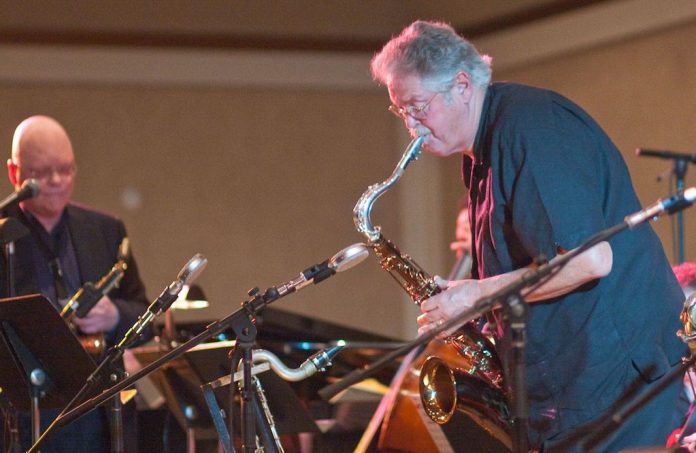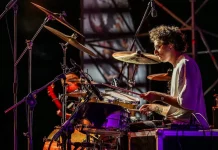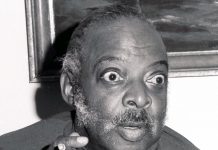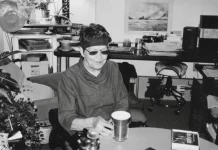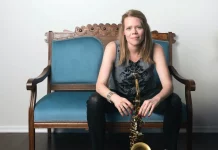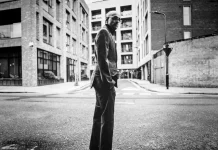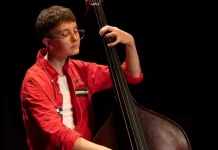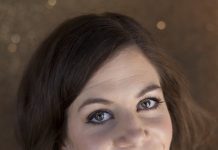These days Pete Christlieb is likely as not found in his spacious garage, working on a dragster, a passion he has indulged for some 50 years, he says. “I used to race myself, and right now I’m working on a car for my granddaughter”!
In March 2018, I visited him at the home he shares with his wife, trombonist Linda Small, in suburban Spanaway Washington, not far from Tacoma. After our interview he proudly showed me his clean, well-equipped shop, less man-cave than proof that he could easily have built a career in the lucrative automotive design industry had he wanted.
Highly inventive and harmonically astute, he negotiates changes with ease, ripping off flurries of notes punctuated by upper register shouts, yet without ever losing sight of structure and logic
Fortunate for us fans, Pete chose his other passion, jazz. Throughout the 70s and 80s, his fervent, straightahead tenor became a household sound. Even if most didn’t recognise his name, practically everyone in the country watched The Tonight Show with Johnny Carson, and heard Pete wailing away in the Doc Severinsen Orchestra. On his occasional features, he always tore it up. He was also widely heard on Steely Dan’s 1977 hit album Aja, his soulful solo – done in one take – sanctifying Deacon Blues. Later, a memorable cameo spot on Nat and Natalie Cole’s platinum-selling record of Unforgettable revealed his passionate romantic side to the millions who heard it.
One story he tells typifies Pete and his all-out approach to blowing. (1) In the mid-60s, and still in his late teens, he had been on the road and was ready for a break back home in Los Angeles. “I got a call to go down to this club and sub for a guy … at this famous jazz club [Marty’s] in Watts. This was just after the riots, and they told me to be sure to take the battery out of my car and put it in the trunk when I got there”.
So down he went, “and it was two tenors, trumpet, drums and B3 – Hammond B3 – really great, greasy, nasty, down and dirty B3”.
Initially apprehensive about having to prove himself as the only white person on the premises at a time of strained race relations, within a couple of weeks the youngster was part of a boisterous scene:
“We were playing our asses off … and people were screaming and yelling every night, and it was hot and heavy”. The other tenor was Hadley Caliman, who “sounded very much enamoured with John Coltrane. He had that Coltrane kind of feel, and I was Lockjaw Davis and Gene Ammons, and a bunch of black tenor players all rolled up into one because those were my influences … So, you know, we were doing that thing!”
‘Oliver Nelson came in from New York – he was buying a house in L.A. – and he brought his horn up on stage. He got in the middle of this thing, and the next thing you know, he got chewed up and spit out’
Was it combative?, I asked.
“Oh yeah, it was great, and I got a lot of respect because I could hang in there with him. And Bobby Bryant [trumpet] would light the fire. He’d throw a match on that fire and step back and ‘BAM!’ One night Oliver Nelson came in from New York, he was buying a house in L.A. – he was gonna move to L.A. and start his career – and he brought his horn up on stage. He got in the middle of this thing, and the next thing you know, he got chewed up and spit out [laughs]! And you know, when he started working in town, I never got a call to work with him, ever, because he was pissed about it [laughs]!”
Combative, yes, also robust, swaggering and uninhibited describe Christlieb’s tenor style. Highly inventive and harmonically astute, he negotiates changes with ease – tapping years of jam session experience and work with name bands – ripping off flurries of notes punctuated by upper register shouts, yet without ever losing sight of structure and logic. His swinging forward momentum is irresistible, but he sounds relaxed and unhurried, no matter the tempo. His solos resonate with linear progression, always a story to tell. On ballads, he reveals a heart-on-sleeve intensity that marks him as a true romantic.
Fans and musicians alike are awed by his passion and skill. A week before meeting Pete at his house, I sat with the late Chuck Stentz in an Olympia, Washington club, listening to Pete perform with Tall and Small, an 11-piece band he co-leads with his wife. (The name of their band becomes obvious when 6’3″ Pete stands next to Linda.) As he soloed grandly on A Flower Is a Lovesome Thing, Chuck, a respected tenor man himself, turned to me, his eyes registering amazement, and enthused, “He’s playing a different song, but it fits”. He paused before adding, “Now that’s musicianship!”
So how did Pete Christlieb earn such respect and admiration? While preparing to answer that question, I discovered Gordon Jack’s wide-ranging interview with the tenor player, conducted in 1999. Published both in his book Fifties Jazz Talk, and Jazz Journal in March 2000, it tells a lot. We read, for example, how Pete paid his dues as a youthful Lighthouse All-Star, getting chewed up by Sonny Criss, and of how he was abandoned by Chet Baker in Pueblo, Colorado on a short road tour. Recalls Pete, “This is what happens when you work for a junkie”. We also hear of his growing experiences on the road, touring with Sy Zentner, Woody Herman, Louie Bellson, and many others, as well as his work in L.A. with Bob Florence and Bill Holman. As Gordon’s interview is easily accessed on the web (e.g., at Jazz Profiles), readers are encouraged to search it out. I have tried to avoid repetition as much as possible while still doing justice to Pete’s story.
Peter Christlieb was born 16 February 1945 in Los Angeles, California. (2) His father, Don, was a highly respected bassoonist who worked in the 20th Century Fox film studio, so music became part of Pete’s life from the beginning. He started on violin, discovering the tenor saxophone in high school. Making quick progress, he was soon taking informal lessons from Bob Cooper, who lived nearby and knew his father.
Cooper became an early influence, as did Cannonball Adderly, whose impassioned sound appealed to Pete. While still a teenager, he had a chance to meet his idol at Shelly’s Manne Hole.
“I went in and there he was playing, and I couldn’t believe it. He had this incredible vitality. Man, he was on fire! So I walked up to him on the break, I shook his hand, and I said, ‘When I grow up, I’m gonna play just like you’. And he had this big old grin on his face, and he said ‘Sonny boy, you look just like Don Drysdale [L.A, Dodgers pitcher]!’ Everybody was laughing and falling on the ground, and I just took it in my stride. ‘But I’ll tell you something, Don Drysdale’, he says, ‘I bet you can play’. And I’ll be darned, things were happening so fast for me, a few years later I was on a band that played in San Francisco at the Melodyland Theater … the Quincy Jones band started the show and then we had to play behind this gal, Roberta Flack … We played the gig and I played my solo and I got off the bandstand, and there was this voice behind the curtains, way in the back. And it was Cannonball Adderly, and he says, ‘Hey, Don Drysdale, I knew you could play!’ And I swear, I just felt like a billion dollars, I mean, when someone you’ve idolised tells you that you can play. He was that kind of a person, he made people light up”.
Another key influence was Eddie “Lockjaw” Davis, whose fingering fascinated him
Other influences included Al Cohn and Zoot Sims, both of whom he played with. About Zoot, Pete says “He was the kind of guy if you asked him what was his big influence in music when he was coming up, he would say ‘Johnny Walker [laughs]’. Another key influence was Eddie “Lockjaw” Davis, whose fingering fascinated him. “I heard him play that style where he would take a note and finger it two or three different ways and have it come out in succession, almost like a trombone player with a plunger mute. He could do it with the different fingerings on the tenor … and he could do it at a hundred miles an hour. Oh man, I loved it”.
When Pete was 19 and working at Lake Tahoe with the Sy Zentner band, he met Davis: “We were doing back-to-back duties on stage with the Basie band. So I got to hang out with the Basie guys. Lockjaw was the guy I hung out with”. I asked if Davis “taught” him, and Pete replied “All I had to do was listen and I got a lesson. You take all these influences, and sooner or later, you sound like yourself”.
Footnotes
(1) Pete told a slightly different version of this story to Gordon Jack in their 1999 interview.
(2) Pete insists it was February, not March, as reported by Jack. “That’s what is says on my license”, he told me.

